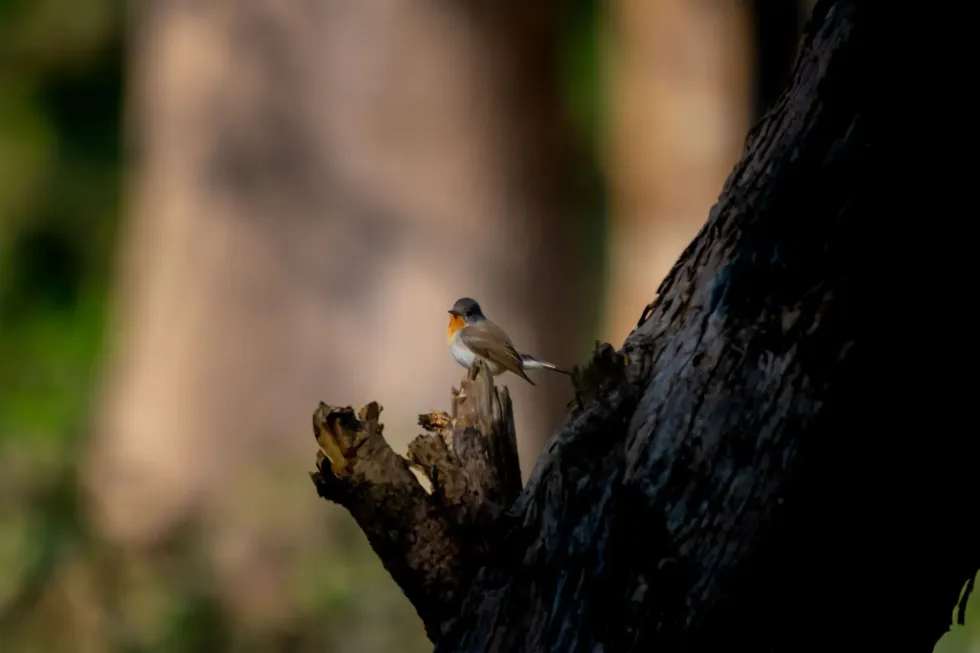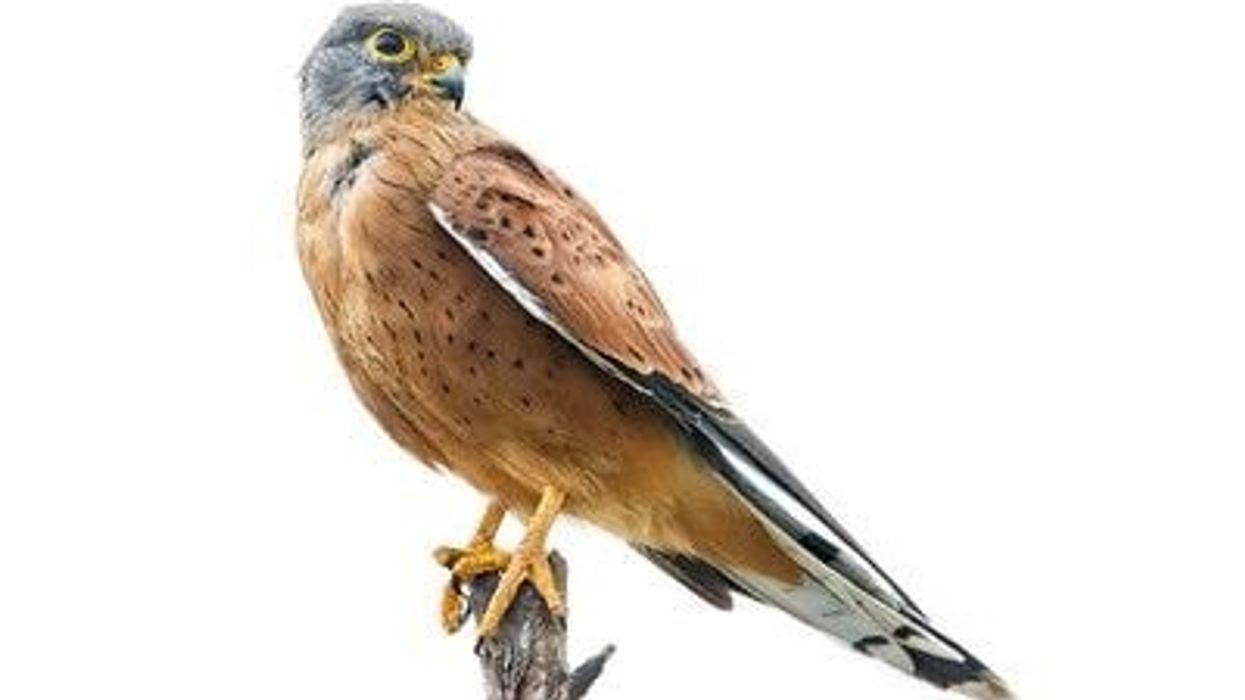In the wonderful valleys of North India and East Pakistan, we find beautiful species of various sized and colored birds. One among them is the Kashmir flycatcher, Ficedula subrubra, which was once recognized as the national bird of the state.
These birds belong to the class of Aves, family Muscicapidae, and genus Ficedula. They have a habitat of temperate deciduous forests with the distribution of dense under-growth during the breeding season and except that they can also be found in moist tropical forest plantations, and gardens.
They are seen in the Western Ghats, the hills of central Sri Lanka, and in the Himalayas from north-west India and some range in Pakistan. During wintering, they migrate from the south to the north region.
The birds have dark black bills, and their identification is red or orange throat and breasts, grey backs, and black-bordered tail. The population of these birds is threatened and requires conservation due to commercial timber extraction.
You can also read about the amazing facts about scissor-tailed flycatcher facts and great crested flycatcher facts.
Kashmir Flycatcher Interesting Facts
What type of animal is a Kashmir flycatcher?
The Kashmir flycatcher, Ficedula subrubra, is a bird belonging to the family of Muscicapidae. These birds have orange or red underparts and breasts.
What class of animal does a Kashmir flycatcher belong to?
The Kashmir flycatcher, Ficedula subrubra, belongs to the kingdom of Animalia, phylum Chordata, class Aves, order Passeriformes, family Muscicapidae, and genus of Ficedula. Forty species of flycatchers are found in the Indian region, all belonging to the genus of Ficedula.
How many Kashmir flycatchers are there in the world?
Among all the other species of flycatchers, the population of Kashmir flycatcher birds is approximately 1500-7000 and their conservation status is vulnerable to the rapid decrease of habitat in the forest.
Where does a Kashmir flycatcher live?
The breeding range of the Kashmir flycatcher bird is from March to May. These birds have breeding grounds during winters in the mountain region of northwest Kashmir, in Pakistan, and the Pir Panjal range in India.
During the non-breeding range, they are found in the Western Ghats and hills of central Sri Lanka. The adult females are the first-winter birds to migrate from south to north in the Indian subcontinent. They are endemic to this location.
What is a Kashmir flycatcher's habitat?
The natural habitat of the flycatcher species includes the distribution of dense mixed deciduous forests with thick undergrowth of grasses. These breeding grounds forest have oak, maple, and willow tree where they build their nest at the perches or tree hollows.
They migrate to the southern parts of India and Sri Lankan hills in summer and are found in the tropical forest plantations and gardens. They are found generally 2460 ft (750 m) above the ground.
Who do Kashmir flycatchers live with?
Kashmir flycatchers neighbor with the other flycatcher species. They are also found with birds residing in temperate and tropical forests, such as common kingfisher, little egret, hoopoe, and many more various species of birds.
How long does a Kashmir flycatcher live?
A Kashmir flycatcher has an average life span of 2-10 years. Although in some rare cases they can live up to 14 years, which is considered an exceptional case.
How do they reproduce?
During the breeding season, this species of flycatchers build their nests mostly in tree hollows and on the perch using small twigs, grasses, and bark of trees. The female bird lays two to four eggs, which are incubated by them alone only or by both sexes equally. The bird breeds from the month of March to May.
What is their conservation status?
With the rise in deforestation, bird species are pushed to extinction rapidly. The conservation status of flycatcher, Ficedula subrubra, is unprotected and is considered an Endangered species.
Due to the rise in the cutting of trees for commercial timber extraction, the bird's population is falling down fast. Restricted overgrazing and cutting of trees within the breeding range can protect this bird family.
Kashmir Flycatcher Fun Facts
What do the Kashmir flycatchers look like?
Kashmir flycatchers birds, Ficedula subrubra, are easy to spot and have a dark beak with a pale or yellowish color at the base of their beak.
However, adult males can have peculiar fully pale or yellowish bills. They have black-gray backs, red or orange-colored plumage throat, and breasts that are bordered with black.
The female birds have slightly browner upper parts and the red plumage may turn to a pinkish wash, while the sub-adult male birds may have a variety of plumage and some might look like the female ones.
How cute are they?
The color of the throat and breast varies distinctively among the species of the flycatchers which gives them an adorable and rare look, thus they can be called cute. Listening to these birds flying with sharp chirps and calls among the dense tropical and deciduous forest is always delightful.
How do they communicate?
The rattling sound of Kashmir flycatchers is heard in the temperate forests. They also have one unique 'eep eep' call which is similar to the call of a red-breasted flycatcher to some extent.
They have a high-pitched note and can be heard from afar. During the breeding season, the males sing loudly and present courtship to the females within their range.
How big is a Kashmir flycatcher?
The Kashmir flycatcher, Ficedula subrubra, is 5 in (13 cm). They are larger than the pygmy flycatcher which is 3.14 in (8 cm) in size whereas smaller than the paradise flycatcher which is 7.8 in (20 cm) in size. They have an average size compared to all the 40 species of flycatchers.
How fast can a Kashmir flycatcher fly?
The average flying speed of a flycatcher is not yet recorded. But, through their rapid preying techniques and ability to fly long distances in the wild, we can consider that they are quite fast in the air.
How much does a Kashmir flycatcher weigh?
The average weight of a flycatcher is 0.01 lb-0.02 lb (9-12 g). These birds are light-weighted due to their hollow bones which helps them to fly at an average speed.
What are the male and female names of the species?
The Kashmir flycatcher species are mostly found in pairs. The flycatchers have a gray-black upper body including orange-red throat, breast whose sides are bordered in black.
The female birds have slightly browner upper parts, and their red underparts are sometimes degraded to a pinkish wash. Females are the first winter birds to migrate during wintering. There is no specific name given to the male or female birds of this species.
What would you call a baby Kashmir flycatcher?
There is no specific name given to the hatchlings of the flycatchers. The young birds have red-colored throats and breasts and are protected by the female and male birds equally in the breeding season.
What do they eat?
These bird species prey on low flying insects such as flying ants, solitary bees, and common wasps. They also feed on the light-bodied invertebrates on the ground like small spiders, ground ants, and more insects like them. They collect food by 'fly catching' from lower perches hunting insects. They are sometimes seen preying in pairs.
Are they dangerous?
These small creatures are not dangerous at all, except for the low flying and ground insects. They have red plumage, but their population is unprotected due to the loss of natural habitat. They have no relation with us humans.
Would they make a good pet?
Caging such a beautiful piece of nature would not be so appropriate unless required. The flycatcher's population is endangered, as their habitat is rapidly being terminated. Making them pets would protect the species from extinction but birds are the beauty of nature when they are free.
Did you know...
The Kashmir flycatcher, Ficedula subrubra, at times is seen frequently fanning its tail along with cocking. Such action is not often observed in the other species of flycatchers excluding these.
In Kashmiri, the owls are called 'raat-mogul'.
The flycatchers build their nests at an altitude of 6.5-39.5 ft (2-12 m) from above the ground during their breeding time. They also use the abandoned nests of other birds such as woodpeckers.
What is the national bird of Kashmir?
Until 2017, the Kashmir flycatcher population had the identification of the national bird of Kashmir. But now the black-necked crane is declared as the national bird of Jammu and Kashmir.
Do Kashmir flycatchers migrate?
Yes, the Kashmir flycatchers migrate and they winter in the range of the Western Ghats and the central hills of Sri Lanka. When their breeding season starts in March, they migrate to the Himalayas region.
Here at Kidadl, we have carefully created lots of interesting family-friendly animal facts for everyone to discover! Learn more about some other amazing birds from our Nicobar pigeon fun facts or magpie facts pages.
You can even occupy yourself at home by coloring in one of our free printable Kashmir flycatcher birds coloring pages.










